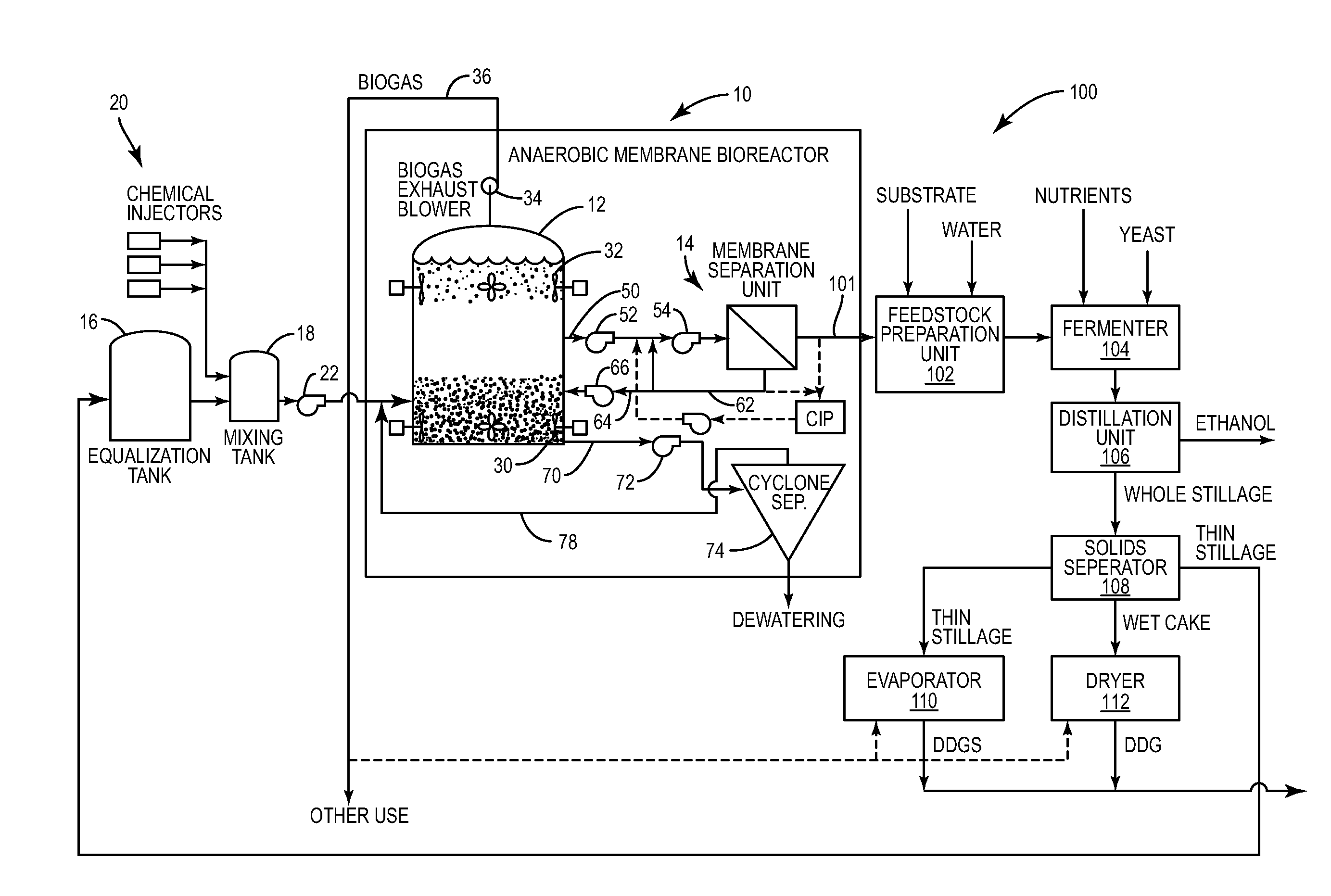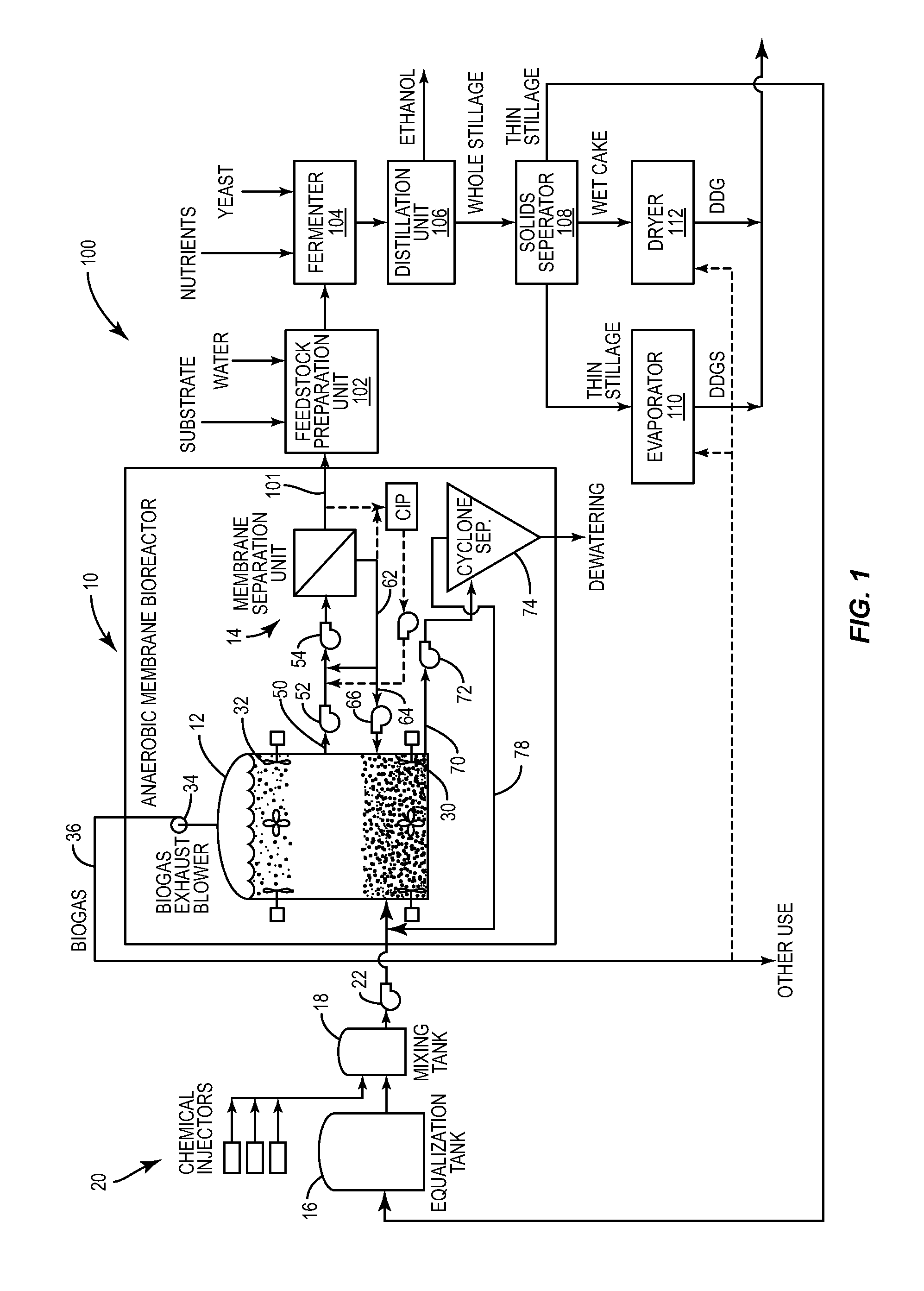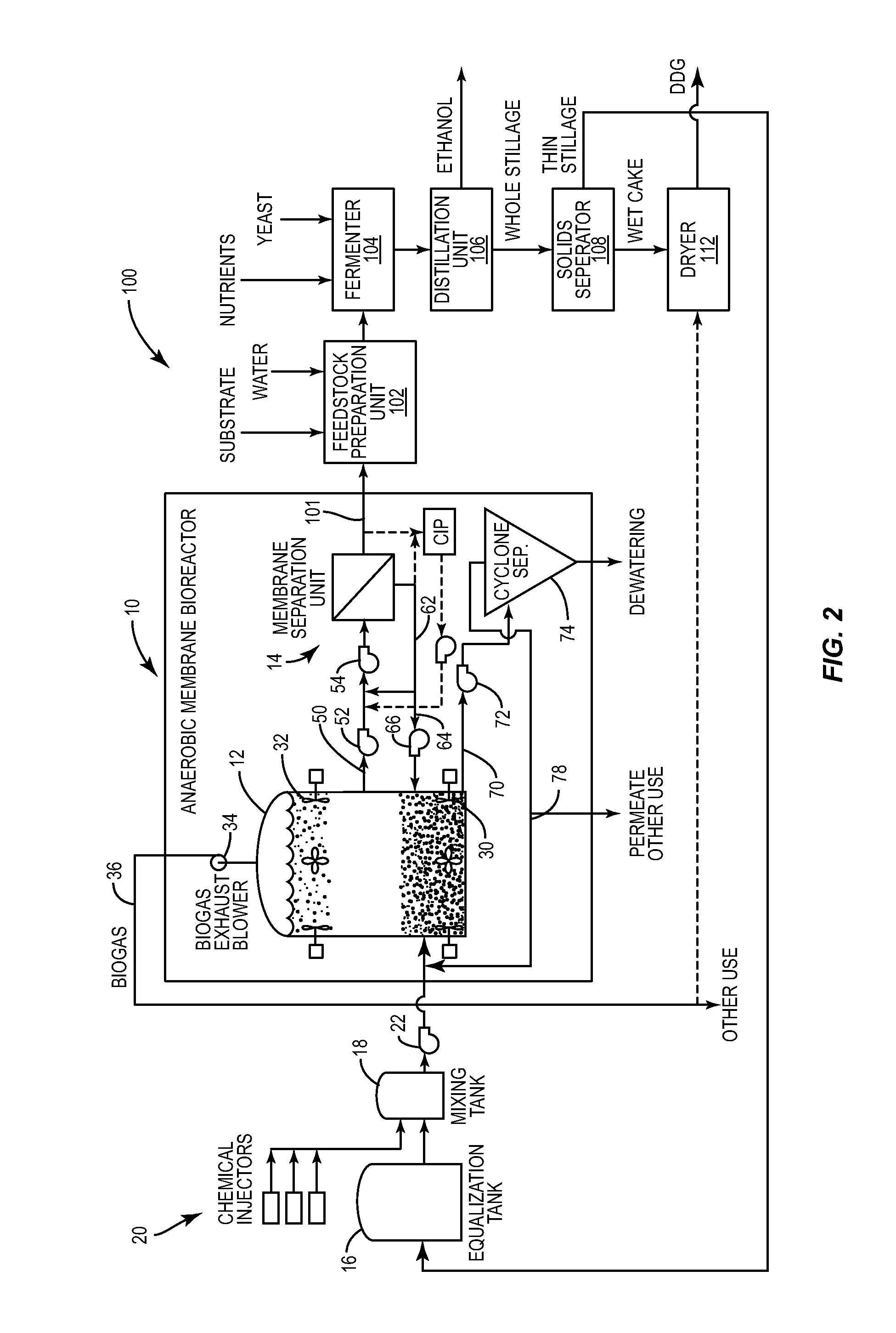System and Method for Producing Ethanol and Biogas
a biogas and ethanol technology, applied in the field of systems and methods for producing ethanol, can solve the problems of limiting the capacity of active materials that can be added to each fermentation batch, unable to remove 100% of solids in a conventional centrifuge operation, and reducing the capacity of the fermenter
- Summary
- Abstract
- Description
- Claims
- Application Information
AI Technical Summary
Benefits of technology
Problems solved by technology
Method used
Image
Examples
Embodiment Construction
[0011]With further reference to the drawings, an ethanol plant or ethanol production system is shown therein and indicated generally by the numeral 100. Before discussing the process of producing ethanol, it might be beneficial to review basic system components for the plant. With reference to FIG. 1, there is provided a substrate or feedstock preparation unit 102. As will be discussed subsequently herein, feedstock such as corn is directed into the substrate preparation unit 102 and starches forming a part of the feedstock is converted to sugar. Downstream of the substrate preparation unit 102 is a fermenter or fermentation unit 104. Again, as will be discussed in more detail below, the fermentation unit 104 converts the sugar into ethanol and produces a beer that includes ethanol and other dissolved and suspended solids. Downstream of the fermentation unit 104 is a distillation unit 106 which functions to separate the ethanol from the beer and, as FIG. 1 indicates, produces ethano...
PUM
| Property | Measurement | Unit |
|---|---|---|
| height | aaaaa | aaaaa |
| volume percent | aaaaa | aaaaa |
| concentration | aaaaa | aaaaa |
Abstract
Description
Claims
Application Information
 Login to View More
Login to View More - R&D
- Intellectual Property
- Life Sciences
- Materials
- Tech Scout
- Unparalleled Data Quality
- Higher Quality Content
- 60% Fewer Hallucinations
Browse by: Latest US Patents, China's latest patents, Technical Efficacy Thesaurus, Application Domain, Technology Topic, Popular Technical Reports.
© 2025 PatSnap. All rights reserved.Legal|Privacy policy|Modern Slavery Act Transparency Statement|Sitemap|About US| Contact US: help@patsnap.com



